
Getting from Central Tokyo to Myoko Kogen
Route Map
Tokyo is a massive city, with several large transport hubs. Unless you arrange a private transfer, you will probably be transiting through JR Tokyo Station.
Below we summarize the easiest route to Myoko Kogen from Tokyo Station by Public Transport. If you’d like advice on other routes, please do not hesitate to send us an inquiry.
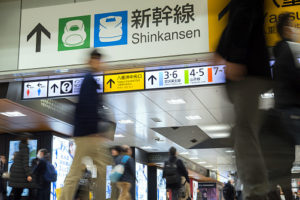 Tokyo Station
Tokyo Station
Many people prefer to use the world famous Shinkansen Bullet train as part of their transfer. This is indeed a great option, but the main issue is luggage. The bullet trains have very limited luggage space, especially for skis and snowboards. If you have a few days in Tokyo before your ski vacation, then we recommend sending all your ski gear to your ski resort accommodation, and traveling light while in Tokyo.
Tokyo Station is a massive station, the 3rd busiest in Japan (after Shinjuku and Ikebukuro). It averages over 450,000 passengers per day, and that’s just the JR lines.
There are entrances on the West Side (Marunouchi Entrance), and East Side (Yaesu Entrance).
Tokyo Station signs to Shinkansen
Tokyo Station signs to Shinkansen
Tokyo Station is well signposted and to get to the Shinkansen platform, you follow the signs (pictured right). The blue logo is for the Shinkansen west to Nagoya and Osaka, so follow the Green Logo which includes the Hokuriku Shinkansen to Nagano.
There is a double ticket gate system to use the Shinkansen Bullet trains. You first enter the main concourse, follow the green signs to the Shinkansen ticket gates, where you insert your tickets into the ticket gate again. Always remembering to collect your tickets as you pass through the gates.
The Hokuriku Shinkansen departs from platforms 20-23. The departures are displayed in Japanese and English. The platforms are on level 2, so you take the escalator up to the platform from the main concourse.
Once on the platform, the carriage numbers are displayed overhead. This is exactly where the car doors will open.
Note that when the train arrives at Tokyo station, it will be cleaned and serviced before passengers are allowed to board. Boarding generally only starts 3-4 minutes before departure.
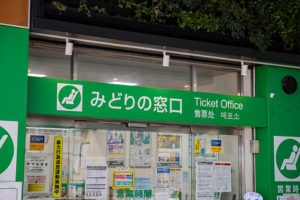 Buying Tickets
Buying Tickets
JR Ticket Office
Tickets can be purchased at any JR Station in Tokyo. You can purchase from a ticket vending machine, or from a counter at a ticket office.
Larger stations may also have a travel service center for foreign visitors, where multi lingual staff are available.
Payment can be made in cash or by credit card, but there have been issues where foreign issued credit cards do get rejected, so it pays to bring a couple.
If purchasing from a counter, then tell the attendant your origin and destination (train station, not ski resort). The attendant will show you the next available train times.
Hokuriku Shinkansen via Nagano

Train Classes
There are several classes on the Hokuriku Shinkansen.
- Standard Class (reserved and non reserved*) – 5 seats across the row in a 3-2 configuration (Cars 1-10)
- Green Class (superior class) – 4 seats across the row in a 2-2 configuration (Car 11) – Green Class costs about 20% more than standard class
- Gran Class (first class) – 3 seats across the row in a 1-2 configuration (Car 12). Complementary food and beverage service (Kagayaki and Hakutaka trains only) – Gran Class costs about double of standard class
- reserved seat means you have an assigned seat / non-reserved means you can sit in any seat in a “non-reserved” carriage (first come first seated basis)
Train Types
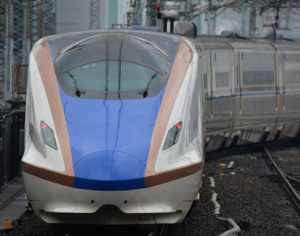
There are 3 types of train that run on the Hokuriku Shinkansen Line. While the train body is the same, the speed and number of stops vary. All trains will have either Kanazawa or Nagano as the destination, but all trains do make a stop in Nagano.
In all cases there are 12 carriages on the train with 12 being the front of the train heading towards Nagano.
- “Kagayaki” – This is the fastest type of train. After departing Tokyo it only stops at Ueno, and Omiya before arriving at Nagano. All seats on this train are reserved (seat assigned). The destination for the Kagayaki trains is Kanazawa. From Tokyo Station to Nagano this train takes about 90 minutes.
- “Hakutaka” – This train also heads to Kanazawa, but it stops at more stations along the way and is about 15 minutes slower than the Kagayaki Train. There are reserved and non-reserved seats on this train.
- Asama – This train only travels as far as Nagano, but it stops at most stations along the way.
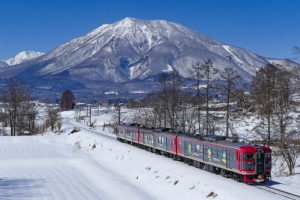
Shinano Rail Co
The company operating the line between Nagano Station and Myoko Kogen is called “Shinano Tetsudo”, or Shina Rail Co.
There is only about 1 train per hour from Nagano Station to Myoko Kogen. These are commute trains that stop at every station. The trip from Nagano to Myoko Kogen takes about 45 minutes.
Buying a Ticket
As the Shinano Co is not a JR Line, your original ticket does not cover this part of the trip. However you can pay for your ticket when you arrive in Myoko Kogen. (Make sure you keep you JR tickets to show that you boarded the train in Nagano).
Boarding the Train
On arrival in Nagano, you need to transfer from the Shinkansen Bullet train line to the Shinano Rail Co Line. There are a set of transfer gates on the main concourse level. You pass through the gates (collect your tickets) and head down a small escalator. Use the digital signage to locate the next train to Myoko Kogen, and head to that platform a few minutes before departure.
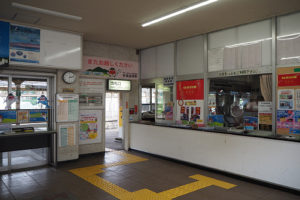
Arrival in Myoko Kogen
Trains from Nagano generally arrive at platform 2. This is a hassle as you need to climb stairs, cross the bridge, go down the stairs, and to the exit (all while carrying your luggage).
At the exit, show your JR tickets to the staff member and he/she will charge you 850yen for the trip from Nagano. Cash only.
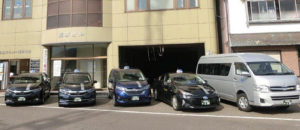
Myoko Kogen Station is located about 10 minutes drive from the ski resort areas.
Unless your accommodation offers a pick up from the station, taxi is the best option for getting from that station to your accommodation.
There are often taxis parked in front of the station (especially when trains arrive). Kogen Taxi is located in the large building across the road from the station to the south. You may be able to walk in there and order a taxi (but they do not have English speaking staff)
